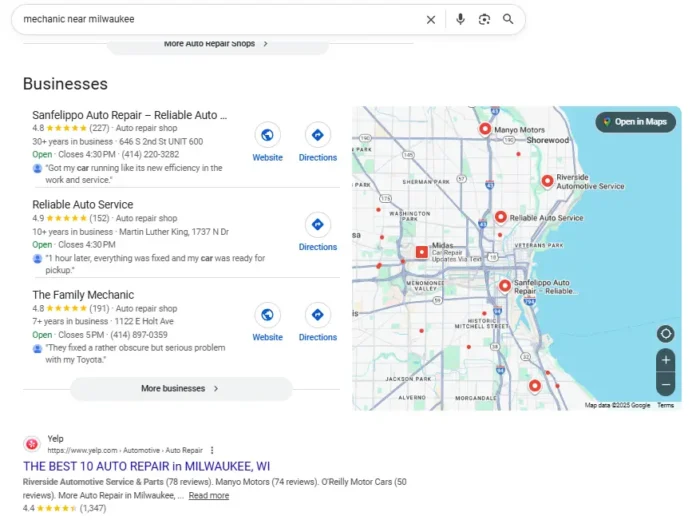CNBC's Inside India newsletter: India looks ready for a deal with the U.S. — but at what cost?
U.S. President Donald Trump has, on several occasions, referred to India as the "tariff king," but now New Delhi stands ready to abdicate its throne.

US President Donald Trump and Indian Prime Minister Narendra Modi attend "Howdy, Modi!" at NRG Stadium in Houston, Texas, September 22, 2019. Tens of thousands of Indian-Americans converged on Houston on Sunday for an unusual joint rally by Donald Trump and Narendra Modi, a visible symbol of the bond between the nationalist-minded leaders. With many in the crowd decked out in formal Indian attire or the signature saffron of Modi's Bharatiya Janata Party, the event kicked off in a football stadium with a Sikh blessing, boisterous bhangra dancing and, in a nod to local customs, cheerleaders in cowboy hats. (Photo by SAUL LOEB / AFP) (Photo by SAUL LOEB/AFP via Getty Images)
Saul Loeb | Afp | Getty Images
This report is from this week's CNBC's "Inside India" newsletter which brings you timely, insightful news and market commentary on the emerging powerhouse and the big businesses behind its meteoric rise. Like what you see? You can subscribe here.
The big story
U.S. President Donald Trump has, on several occasions, referred to India as the "tariff king," but now New Delhi stands ready to abdicate its throne.
Recent reports indicate that India has proposed zero tariffs on imports of steel, auto components and pharmaceuticals from the U.S. on a reciprocal basis up to a certain quantity.
This signals a major shift in the South Asian country's approach, as it has relied on hefty import duties on goods ranging from agricultural produce to automobile parts, footwear, jewelry and information technology products to safeguard its domestic industry.
Data from the World Trade Organization pegs India's simple average tariff at 17%, substantially higher than the U.S.' 3.3%, as of 2023.
Trump's 26% tariffs announced last month on Indian exports — suspended for now — appear to have pushed the country to rethink its protectionist stance.
India, in fact, is among the countries nearing a trade deal with the U.S. Last week, Trump said that negotiations had been "coming along great ... we'll have a deal with India."
"The future of India hinges on it bringing down trade barriers and opening itself up to more free trade deals with other countries, especially the U.S," Malcolm Dorson, senior portfolio manager at Global X ETFs said.
The U.S. is India's largest trading partner, with bilateral trade hitting $129 billion in 2024. India had a $45.7 billion surplus.
"For India's economic growth to scale from 6% to 8-9%, it needs foreign investment and to ensure that its goods have a global market," Shumita Deveshwar chief India economist at TS Lombard said, adding that loosening its protectionist stance and reducing regulatory burden is what will move the needle for India.
Flood of U.S. goods?
Where does a trade deal, especially one with zero tariffs on certain goods, leave India's ambitions of shoring up its domestic manufacturing?
"India will be careful not to do anything that will harm domestic businesses," Deveshwar told CNBC's Inside India.
"Yes, India wants a deal with the U.S. because it is our biggest market in terms of goods and services imports and exports. But, zero tariffs is quite ambitious and I don't see the government taking such a big step," she said.
Other experts suggest that even if the deal involves India abolishing tariffs on certain sectors, it won't be particularly detrimental to all of those industries.
Peeyush Mittal, portfolio manager at Matthews Asia does not see a substantial impact on India's steel, pharmaceuticals and auto parts sectors.
Exporting steel from the U.S. to India is a "money losing proposition," given the high transportation costs, Mittal said. "I find it very difficult to believe that, even with zero tariffs, U.S. steel producers would be able to sell in India."
On the pharmaceuticals front, Mittal notes that the U.S. produces a lot of patented drugs amounting to "hundreds of thousands of dollars," which only the ultra-wealthy can afford. A vast majority will be priced out from such products, he said, adding that the absence of tariffs on pharmaceutical imports will "not alter the structure of the industry in India."
With Trump aiming to develop the U.S. healthcare sector, the real challenge would be if the country reduces its imports of Indian drugs, or worst if generic Indian pharma companies operating on fairly thin margins are required to establish manufacturing facilities in the U.S.
Such moves will have "far reaching consequences and will compromise the economic contributions of the pharmaceuticals sector to India's growth," Mittal said.
He also does not expect a material impact to India's auto sector, if the country makes way for more U.S. auto parts or automobiles imports.
Ford and General Motors previously had manufacturing operations in India. However, the appeal for their cars was "little among buyers," Mittal said.
"The guy at the bottom of the pyramid wants cheap Indian vehicles and the guy in the middle to the top is looking for luxury."
It would be hard for these companies to make inroads now, since local manufacturers such as Tata Motors as well as Japanese and South Korean brands such as Suzuki, Toyota and Hyundai have deep roots in the mass and premium consumer markets, while the ultra-high-net-worth class favors continental brands such as Mercedes and BMW, Mittal said.
Winners and losers
Mittal and Global X's Dorson see several opportunities in the Indian stock market in the wake of a deal, while noting that there could be some losers if India fails to reach an agreement.
Dorson is betting on financials — namely large-cap banks — materials and healthcare, if the U.S. and India make a deal. These sectors, will also see the most downside in the absence of a deal, as higher tariffs will compromise their earnings, he said.
Financials is a "representation of the Indian economy," he said, adding that it will potentially see stronger borrowing from companies to facilitate operations from stronger trade, which would help boost earnings.
Within the space, Dorson is bullish on private banks such as HDFC and ICICI which reported strong first-quarter earnings recently. He also likes mid-tier banks Axis Bank and Federal Bank as well financing companies including Shriram Finance which are slated to do well from an "overall upswing in the sector."
Dorson also expects steel and pharmaceuticals companies to be thrust into the limelight, if a deal is struck as they would likely have more access to the larger U.S. market.
JSW Steel and Steel Authority of India in the steel space and Cipla and Dr Reddy's Laboratories in pharmaceuticals will be most sensitive to trade headlines — gains in case there's a deal and losses if there's none, he said.
Meanwhile, Mittal expects a trade deal to benefit logistics companies — across port operators, railways and road transportation service providers — as there will be higher demand for their services. His picks: Container Corporation of India and Ashok Leyland.
Regardless of the outcome of the trade negotiations, Dorson is bullish on consultancy giants Tata Consultancy Services and Infosys given that they focus on services, and are "not manufacturing or sending anything to the U.S."
Another sector that is set to outperform, irrespective of a deal, is consumer staples, Mittal said. Calling it "the place to be," as it will benefit from higher consumption in a low inflation and interest rate environment.
Mittal is also betting on the electronics space as global companies, outside the U.S. are seeking out Indian players. "The ecosystem is becoming bigger in India and we think it's going to become self-fulfilling," Mittal said, naming Avalon Technologies as a stock he likes in the sector.
Need to know
India conducted strikes against Pakistan after militant attacks in Jammu and Kashmir. The country's Ministry of Defence said that its armed forces had conducted a military operation against Pakistan and what it calls Pakistan-occupied Jammu and Kashmir, targeting "terrorist infrastructure." The strikes, which targeted nine sites, followed a militant attack in Pahalgam, Jammu and Kashmir, in which 26 people were killed last month, the ministry said.
India and the U.K. signed a bilateral trade agreement Tuesday. Under the deal, India will gradually lower taxes on imports from the U.K., with the vast majority of goods traded becoming "fully tariff-free within a decade," according to the U.K. government. India's tariffs on automotive imports from the U.K, for instance, will be cut sharply from over 100% to 10%. The Indian government said the U.K. will remove all tariffs on 99.1% of imports as soon as the agreement comes into force.
Service activity in India grew in April. The HSBC India Services Purchasing Managers' Index climbed 58.7 in April, marginally higher than the 58.5 in March, but falling short of the preliminary estimate of 59.1. A figure above 50 denotes an expansion in activity. However, business confidence among service providers fell to its lowest in nearly two years.
What happened in the markets?
Indian stocks were flat Thursday after New Delhi struck several targets within territories controlled by Pakistan in a military operation the day before. The Nifty 50 is up 3.21% so far this year, while the BSE Sensex has gained 3.43%.
The benchmark 10-year Indian government bond yield was down marginally at 6.323%.
On CNBC TV this week, Gary Shilling, market analyst, spoke to CNBC's "The Bottom Line," explaining why he was bullish on India. The country's population, now the world's biggest after overtaking China's, will be an engine of growth for its economy, according to Shilling. "You can only put so many cars in your driveway, but in services, you can spend almost an infinite amount of money on recreation, travel, medical services, and so on," Shilling added.
Meanwhile, Regional CEO of the World Gold Council Sachin Jain said India's gold market was seeing strong momentum amid growing interest in digital gold and ETFs. The "physicality" of gold that mattered so much in India is less important to investors, especially those in the younger generation, which is causing an increase in demand for digital gold, Jain said.
What's happening next week?
Keep an eye out for inflation reports for India and the U.S., as well as gross domestic product figures for the euro zone and U.K.
In India, Manoj Jewellers and Srigee DLM, a plastics manufacturer, go public on Monday.
May 9: China balance of trade for April
May 10: China consumer price index for April
May 12: India consumer price index for April, Manoj Jewellers IPO, Srigee DLM IPO
May 13: U.S. consumer price index for April
May 14: India wholesale price index for April
May 15: India balance of trade for April, U.S. producer price index and retail sales for April, euro zone second estimate of GDP growth rate for first quarter, U.K. preliminary GDP growth rate for first quarter

 Konoly
Konoly 































